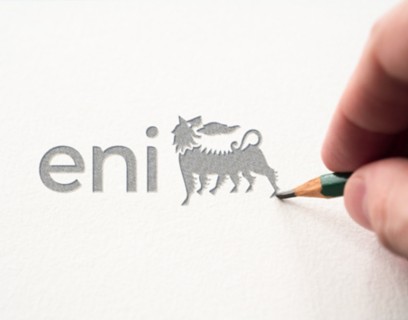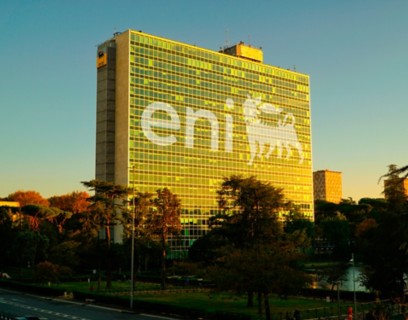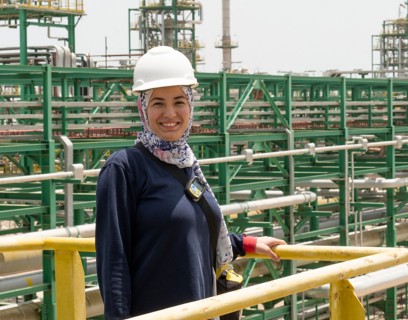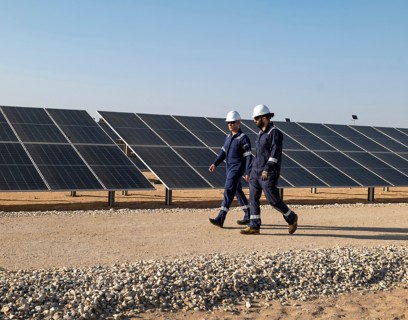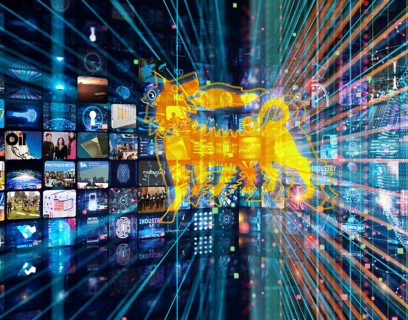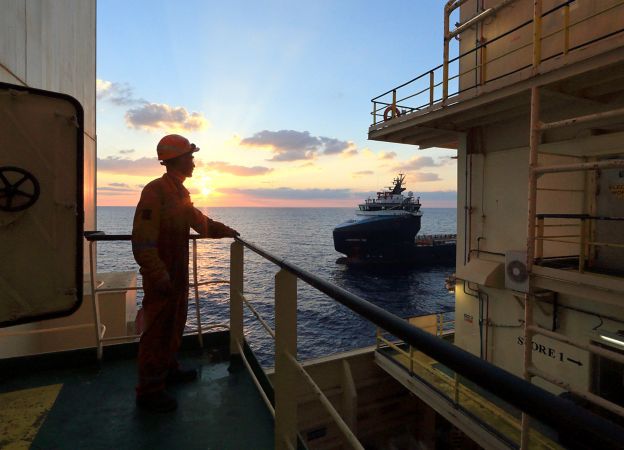
Or , our new artificial intelligence tool.
MyEni Login
Digital geosciences, the underground as seen by supercomputers
Using HPC6, our explorers can learn about the subsoil in an increasingly precise and safe way.

What are digital geosciences?
To discover natural gas, a thorough understanding of the nature of the rocks that generate and contain it is essential. In recent years, the application of digital technologies to the geosciences has provided increasingly detailed simulations of the processes underlying both natural gas production and rock formation. This advance in knowledge has made it possible to build three-dimensional models of surface rocks, which, when applied to subsurface ones, facilitates the identification of layers of rock that may contain natural gas at depths of several kilometres. In addition, digital geosciences analyse surface data, providing visualisations of subsurface geometry and helping to identify potential reservoirs with reduced uncertainty, thereby providing an indispensable contribution to exploration activities.
Using digital technologies, we are able to process a large amount of data, reaching the point of reconstructing the geological characteristics of deep layers in which unexplored resources could be trapped. The engine of this knowledge system is HPC6, the latest generation of our supercomputers, used by our geophysicists, geologists, and explorers.


Industrialisation
Carbon management
Natural gas and other hydrocarbons
What are they for
Digital geosciences make it possible to accurately study the subsoil and, by integrating with experimental geosciences, allow the identification of new hydrocarbon deposits for production. Exploration, i.e. the discovery of new reserves, is a difficult task because it is being increasingly conducted in offshore areas at depths that can reach thousands of metres below sea level. The layers of rock that make up the deposits, in turn, may lie thousands of metres below the seabed. The use of advanced technologies such as digital geosciences makes reducing the costs and the areas of uncertainty associated with this activity possible, whilst also reducing their environmental impact.
How do they work?
The subsurface can only be investigated through data acquired from outside, i.e. from the surface. Physics provides us with the mathematical models to translate this data into detailed 3D images of the geology, producing what we call seismic imaging. In practice, this means translating mathematics into sophisticated computing programmes.
Seismic surveys, a classic method used in the energy industry to investigate the subsurface, are benefiting from the increased efficiency and precision offered by digital technologies. This contributes to generating accurate three-dimensional geological models, which can be drawn up much more quickly than in the past and help us reconstruct the geological history of sedimentary basins to identify areas with an increased likelihood of natural gas accumulation. Modern machine learning and artificial intelligence methodologies also offer the potential to support our geologists in the interpretation of data and to supplement the results of seismic studies with an estimation of the chemical-physical characteristics of rocks.
A further area of application of digital geosciences are projects for the capture and permanent storage of CO2: by improving our knowledge of the interactions of carbon dioxide with rock systems, we are able to gain very valuable expertise about the reuse of depleted deposits as storage sites.
Features and performance
-
606mln of billion
complex mathematical operations performed in one second by HPC6
-
3,472
total CPUs in HPC6
-
13,888
total GPU cards in HPC6
Browse the interactive special on HPC6, our supercomputer
A technological lever to accelerate Eni’s transformation and support the development of high-potential new businesses.

